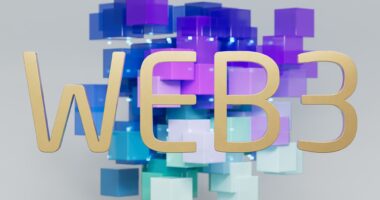
Opinions expressed by Entrepreneur contributors are their own.
Employee resource groups (ERGs) and business resource groups (BRGs) are gaining in popularity in corporate America as companies seek ways to build, sustain and grow a more diverse, equitable and inclusive workforce. ERGs and BRGs can be valuable assets in improving diversity, equity and inclusion (DEI) hiring outcomes.
Based on my experience working with several ERGs and BRGs over the years, I have compiled five ways companies can better engage these groups to achieve their DEI goals. I have added a relevant case study to each recommendation in order to further substantiate my observations and provide a practical approach to understanding and executing feasible solutions.
Related: How to Utilize Employee Resource Groups and Cultivate Meaningful Impact in Your Workplace
1. Provide resources and support
One effective way to engage ERGs and BRGs is to provide them with the necessary resources and support. This could include funding, training and access to company leaders and decision-makers. By investing in these groups, companies can help them achieve their goals while achieving better overall DEI hiring outcomes.
Case study: Intel
Intel has about 40 ERGs and seven leadership councils that brought together more than 25,000 employees in 2021. Intel’s ERGs are structured around race, national origin, sexual orientation and gender identity, parenthood, disabilities, education, faith and other common affinities. The organization encourages employees to join ERGs beyond their personal affinities to build relationships with a wider community. In addition, Intel has an Employee Inclusion Survey to gain a deeper understanding of how different employee populations experience inclusion at Intel, recognize opportunities for improvement and better understand the root causes of any systemic issues and how to address them. These initiatives demonstrate Intel’s commitment to providing resources and support for its employees.
2. Foster collaboration
Another way to engage ERGs and BRGs is to encourage collaboration between these groups and other company stakeholders such as HR, recruiters, hiring managers and employee development programs. This can help ensure that DEI goals are integrated into all aspects of the company’s operations and policies.
Case study: JPMorgan Chase
JPMorgan Chase’s Advancing Black Pathways initiative is a collaborative effort to address systemic racism and provide economic empowerment for Black Americans. The program leverages the company’s resources and partnerships to provide education, career development and access to capital for Black individuals and business owners. Advancing Black Pathways partners with other organizations to connect Black Americans with internships, jobs, mentorship programs and entrepreneurship opportunities. JPMorgan Chase also provides financial education and counseling to help individuals and families become financially stable. The initiative advances collaboration between JPMorgan Chase and its partner organizations to build a more equitable and inclusive society.
3. Encourage feedback
Companies should encourage ERGs and BRGs to provide feedback on hiring processes and DEI initiatives. This feedback can help identify areas for improvement and guide future efforts.
Case study: Salesforce
Salesforce has a well-established ERG program called Trailhead that aims to provide a supportive and inclusive work environment. One example of this program is Salesforce’s “Ohana Groups,” which are focused on building connections, offering mentoring opportunities and promoting diversity and inclusion among employees and allies. These groups are open to all employees and have a variety of focuses, such as gender, ethnicity, age and sexual orientation.
Salesforce’s ERGs play a vital role in the company’s efforts to encourage feedback and improve employee engagement. These groups provide a forum for employees to share their experiences and ideas, give and receive feedback and participate in initiatives that promote DEI.
Related: 7 Ways Leaders Can Level Up Their DEI Workplace Strategy
4. Engage employees and celebrate achievements
Companies should invest in employee engagement and celebrate the achievements of ERGs and BRGs. This can include highlighting success stories, sharing best practices and providing opportunities for ERG and BRG members to highlight their work.
Case study: IBM
IBM’s BRGs are employee-led groups focused on advancing diversity and inclusion in the workplace while also celebrating successes small and big. They are designed to create a sense of community among employees, provide opportunities for growth and drive business results by leveraging diverse perspectives and ideas. The BRGs at IBM are open to all employees, and members have the opportunity to participate in a variety of activities and initiatives, including community outreach, career development programs and networking events. They have been recognized for their impact on employee engagement, success stories and business outcomes, and the company continues to invest in their development.
5. Build communities
Extraordinary things happen when companies provide support to ERGs in creating communities that are built around the shared values and interests of equity and inclusivity. These communities offer a safe space for employees to share their voices, experiences and perspectives. By providing a platform for employees to come together and collaborate, ERGs and BRGs play a crucial role in fostering a sense of belonging and strengthening the company culture.
Case study: Microsoft
Microsoft’s ERGs provide a platform for employees with shared values and interests to collaborate, build communities and drive business impact. They are open to all employees and include a diverse range of affinities and intersectionalities, including women, African Americans/Blacks, Latinx, LGBTQ+, veterans, parents and more.
Microsoft’s ERGs focus on building and growing communities by providing members with opportunities for personal and professional growth, community outreach and connection with other employees across the company. ERG members can participate in events, mentorship programs and leadership opportunities that help them grow their skills and expand their networks. Through community outreach initiatives, ERG members can give back to their local communities and make a positive impact on society beyond their workplace.
ERGs at Microsoft have made significant contributions to the company’s culture and business success. For example, Microsoft’s Black and African American ERG, Blacks at Microsoft (BAM), played a critical role in increasing the representation of Black employees at the company and in driving cultural awareness and education. Similarly, the company’s Women at Microsoft (WAM) ERG has been instrumental in driving diversity and inclusion efforts across the company.
Related: 3 Proven Ways to Hire (and Keep) Diverse Talent
In conclusion, ERGs and BRGs can play a critical role in advancing DEI hiring outcomes and creating a more inclusive and equitable work environment. Companies can better engage these groups by providing resources and support, fostering collaboration, encouraging feedback, engaging employees, celebrating achievements and building communities. The case studies highlighted in this post demonstrate practical approaches to leveraging ERGs and BRGs to achieve DEI hiring goals and create a more diverse and inclusive workforce. By investing in these groups and their members, companies can build a stronger culture of inclusion and drive positive, sustainable and scalable business results.
This article is from Entrepreneur.com









